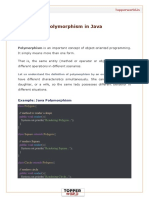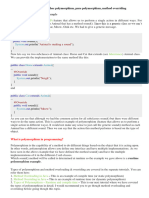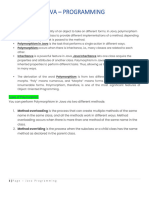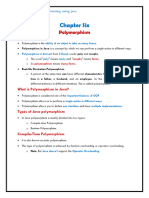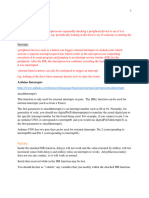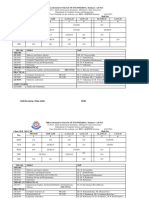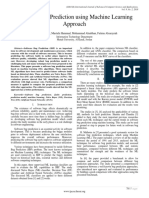0% found this document useful (0 votes)
30 views13 pagesPolymorphism in Java Presentation
Polymorphism in Java refers to the ability of an object to take many forms, allowing a single action to be performed in different ways. There are two main types: compile-time polymorphism (method overloading) and runtime polymorphism (method overriding). This concept enhances code reusability, flexibility, and maintainability in object-oriented programming.
Uploaded by
jeetbhattacharjee2020Copyright
© © All Rights Reserved
We take content rights seriously. If you suspect this is your content, claim it here.
Available Formats
Download as PPTX, PDF, TXT or read online on Scribd
0% found this document useful (0 votes)
30 views13 pagesPolymorphism in Java Presentation
Polymorphism in Java refers to the ability of an object to take many forms, allowing a single action to be performed in different ways. There are two main types: compile-time polymorphism (method overloading) and runtime polymorphism (method overriding). This concept enhances code reusability, flexibility, and maintainability in object-oriented programming.
Uploaded by
jeetbhattacharjee2020Copyright
© © All Rights Reserved
We take content rights seriously. If you suspect this is your content, claim it here.
Available Formats
Download as PPTX, PDF, TXT or read online on Scribd
/ 13














